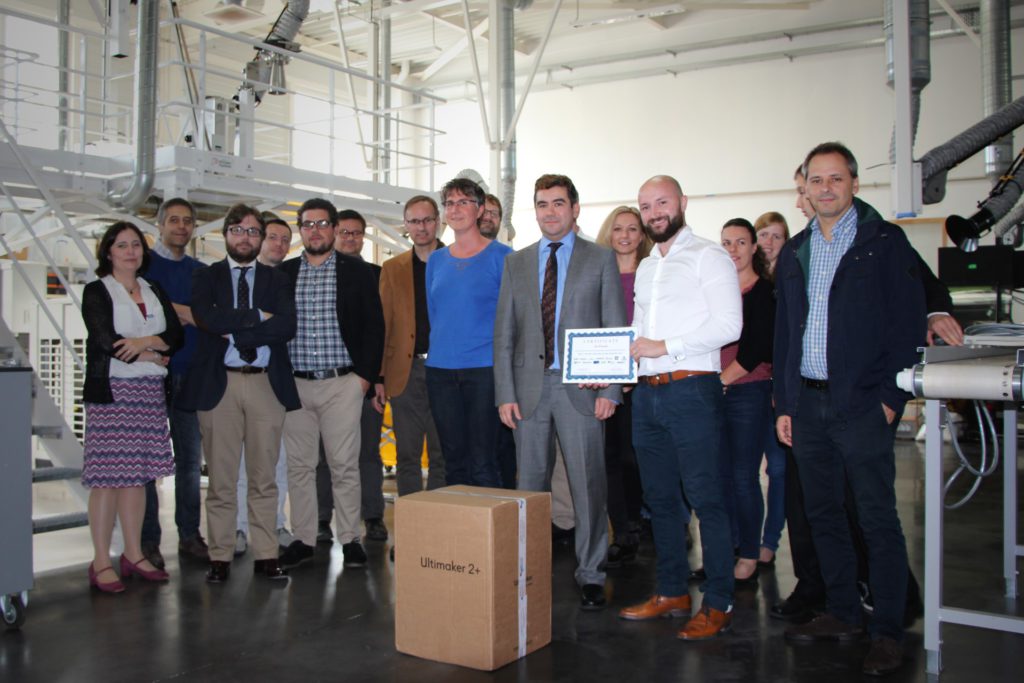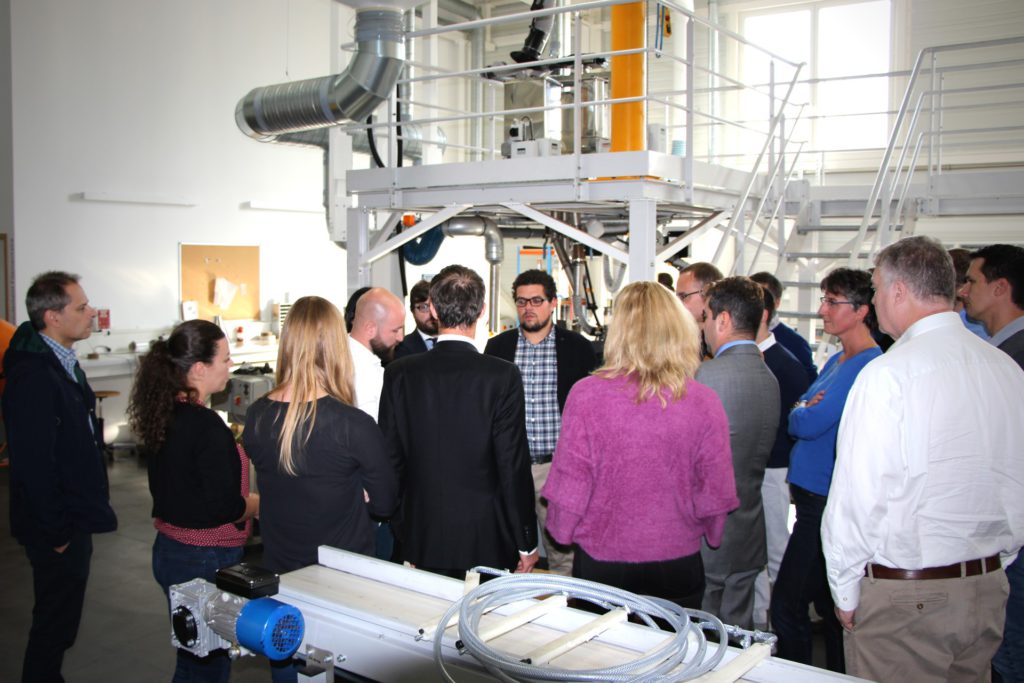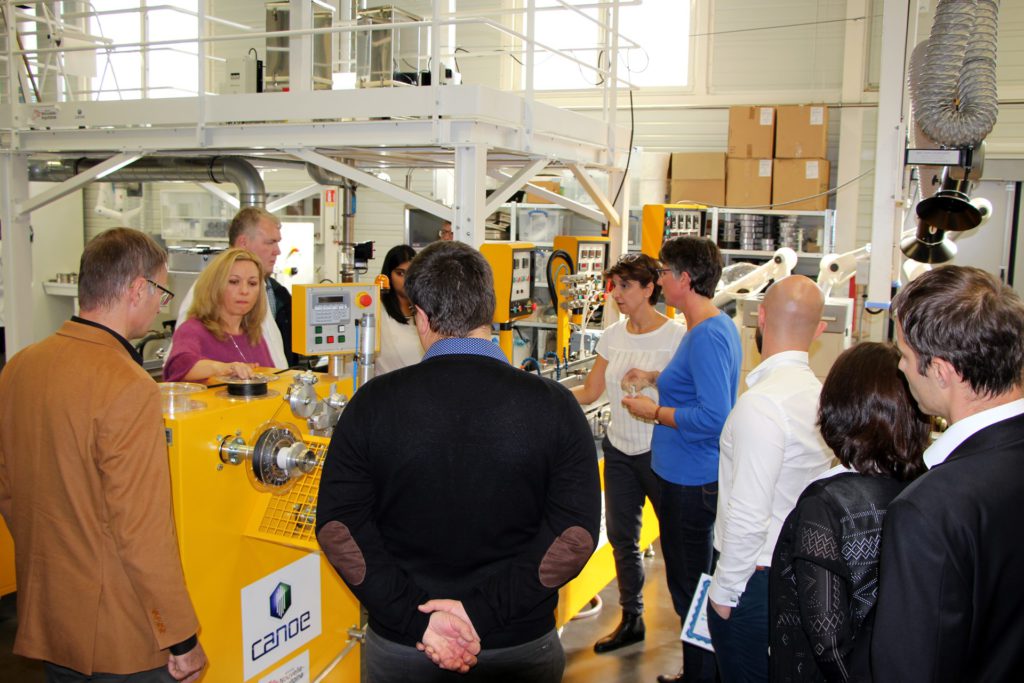
3D printing: CANOE held the award ceremony of the PRINTCR3DIT European contest
On Tuesday, October 10th, a Czech junior engineer – Jan Klusak – received in CANOE premises in Pau (France) the first prize of the PRINTCR3DIT contest for his catalytic reactor built using 3D printing.
Almost a year ago, the CANOE platform has announced the launch of the PRINTCR3DIT 3D printing contest. As part of the H2020 European project called PRINTCR3DIT, the platform asked junior European chemists to design chemical reactors and build them using 3D printing techniques. Marie-Pascale Stempin, engineer, is in charge for CANOE of the PRINTCR3DIT contest. She stated: “In both of our sites located in Pau (France) and in Pessac (France), CANOE is equipped with various advanced additive manufacturing devices. Our premises are located in university campuses. The purpose of the PRINTCR3DIT contest is to initiate interest for 3D printing among high school and college students as well as junior researchers.”
Jan Klusak, the contest laureate, convinced the international committee – composed of academic researchers and industry scientists – with his “didactical” reactor. Taking profit from the many advantages of 3D printing, the junior engineer managed to create a compact chemical reactor that could be used by students in chemistry practicals.
After receiving his prize – an Ultimaker 3D printer – Jan Klusak testified: “I am honored to have won this award. 3D printing in chemical engineering is the main topic of my Ph. D. thesis. I will make this printer available for the other students of my university, in Ostrava, so we will be able to keep developing micro-reactors.”



